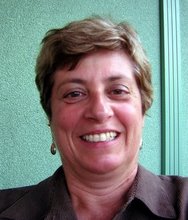Without water, nothing can live. And in the Western United States, there isn't much of it because the region is a desert.
"Everything yearns to be alive in the desert," says Riley Mitchell, a park ranger at Capitol Reef National Park in southern Utah.
For example, short, clumpy trees grow in the cracks of rock where they find even the least bit of soil. Look a little closer and you see vegetation surviving in this land and that includes many flowering plants. Lizards scurry across your path in order to alter their body temperature, which gets too cold under a rock or too hot in the sun.
In the desert everything living screams for water, including your own body. You don't sweat in its dry heat. Your lips crack and your skin dries as your body dehydrates. If you haven't taken care to consume enough water you'll know it because you'll feel faint.
Consequently, the key concern of the West is water. Patient and persistent rivers have largely carved the topography of this region over millions of years until today they are gentle streams or silvery sheens of leftover salt and gypsum lying on a dry riverbed glistening in the sun. Here a river valley is said to be any place where water might have run through it over the past 100 years.
More of these dry river valleys are appearing as the decade-long drought continues. Some people claim this drought is the worst on record--and maybe over the past 1,400 years.
For example, the waterfall of Emerald Pool at Zion National Park is supposed to gush over a ledge. Today it amounts to only a trickle.
Fires that have raged through the forests are "more catastrophic" than ever before because the forests are unable to recover, according to a University of Northern Arizona website that has tracked fires since 1916.
Last week California Governor Arnold Schwarzenegger declared a state of emergency for Los Angeles and Monterey counties after five wildfires burned 13,000 acres and more than 3,000 people were evacuated from their homes. The area has been experiencing dry hot, dry weather with temperatures higher than 100 degrees Fahrenheit (38 Celsius) because in reality, California is a semi-arid place that has largely depended on irrigation and other water projects for its sustenance.
The Ogallala Aquifer, which covers 174,000 square miles (450,000 km) of the semi-arid Great Plains and yields about 30 percent of America's ground water for irrigation, can't replenish itself fast enough to meet the increasing demands of agriculture, industry and municipalities. If withdrawals are not abated soon, some researchers expect its depletion in 25 years.
Meanwhile, a recent study by the Nature Conservancy predicts that temperatures across the country will increase from 3 to 10 degrees by 2100 due to climate change. Hardest hit will be Kansas, Nebraska, Iowa and South Dakota, which depend on the Ogallala Aquifer and make this region the "breadbasket of America." Nevertheless, some senators in those states refuse to sign legislation to address this problem after having supported the "No Climate Tax Pledge" being pushed by the group, Americans for Prosperity.
Modern life and prosperity have put yet another strain on the West's water supply.
"Condos are dotting the [southern Utah] landscape with 10-acre ranchettes on land that was formerly the home of coyotes, deer, and other wildlife," said Mitchell. "Their environmental impact may have potentially a more long-term effect."
Such development also inadvertently hurts people, she said, like when one person's well drilling depletes someone else's water down the line.
So what attracts people to the dry and dusty deserts?
"I'm an old newcomer after 20 years here," said Mitchell. "We like it here because we want to live in a clean, remote, crime-free area where we don't have to lock our doors and where community is close."
(Note: You can view every article as one long page if you sign up as an Advocate Member, or higher).





